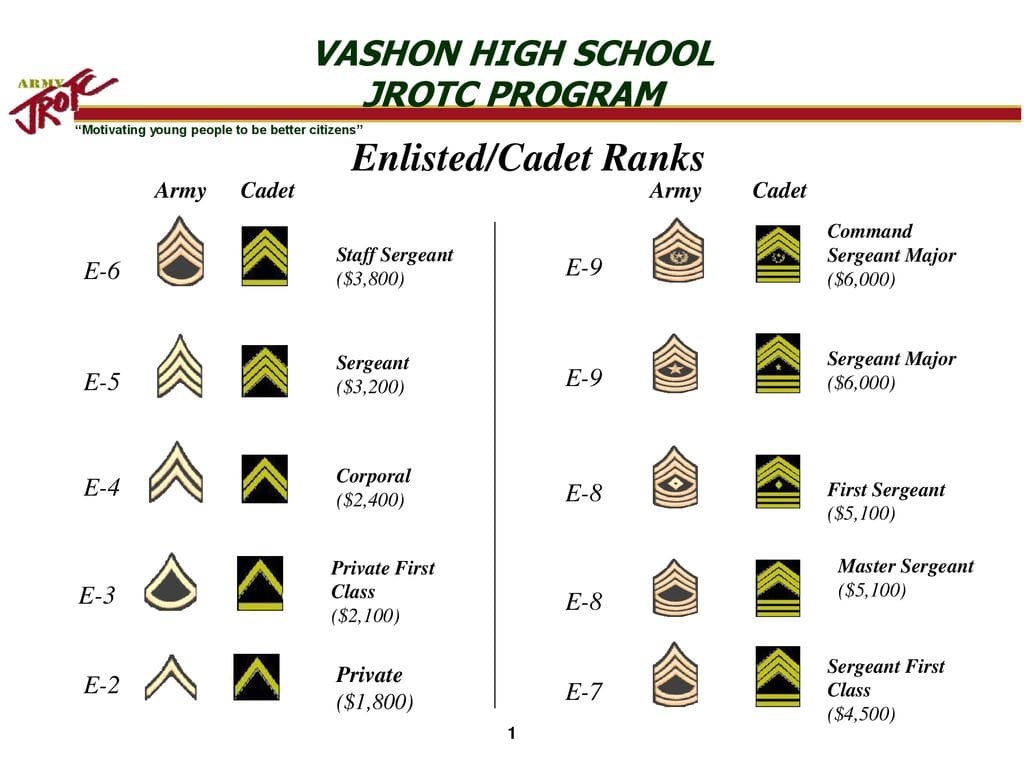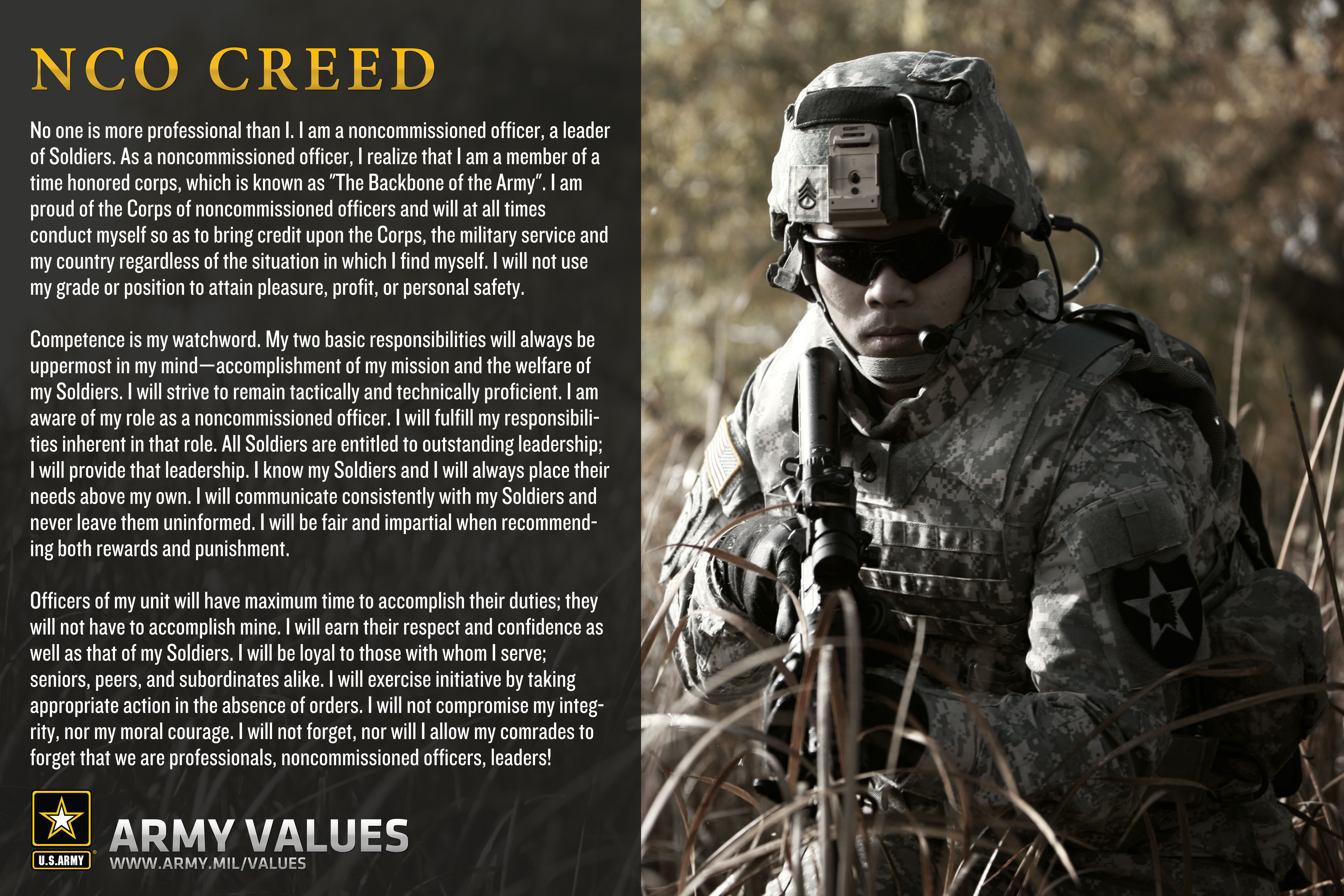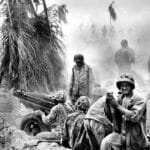JROTC—high school with a leadership twist. This comprehensive guide navigates the ranks of the Junior Reserve Officers’ Training Corps (JROTC), from entry-level to top leadership, across all service branches. Whether you’re a prospective cadet, a current participant, or a parent seeking information, this guide provides a deep dive into the JROTC rank structure, its significance, and its impact on personal development.
Decoding the JROTC Rank Structure
JROTC offers high school students a unique opportunity to develop leadership skills and learn about the military. A cornerstone of this program is its rank structure, mirroring the U.S. military branches (Army, Navy, Air Force, Marines, and Coast Guard). These ranks represent increasing levels of responsibility and leadership potential. This section breaks down the hierarchy, explaining the path to advancement, and the benefits of achieving higher ranks.
Understanding the Hierarchy
The JROTC rank structure is hierarchical, with cadets progressing through ranks based on merit, time commitment, and demonstrated leadership. It’s important to distinguish that while similar, JROTC ranks do not equate to actual military ranks or authority. Each branch has its unique ranks, yet the underlying principles of leadership, responsibility, and advancement remain consistent. Think of it as a tiered system, much like progressing through levels in a video game.
How Cadets Progress
Advancement isn’t automatic. Cadets earn promotions by fulfilling specific requirements, which can vary slightly between branches, but generally include:
- Time in Service: A minimum time served at each rank is often required.
- Performance: Strong academic performance and active participation in JROTC activities are essential.
- Leadership Qualities: Demonstrated leadership potential and the ability to take initiative are critical factors.
- Other Factors: Some programs consider physical fitness and community involvement.
This structured approach encourages continual improvement and fosters a strong work ethic.
JROTC Rank Insignia and Uniforms: A Visual Guide
JROTC uniforms symbolize the program, with insignia denoting a cadet’s rank. Like the military, each rank has distinctive insignia, allowing for easy identification of leadership within the unit. Understanding these insignia is essential for recognizing the chain of command and demonstrating proper respect. This section provides a visual breakdown of insignia by branch.
Army JROTC Rank Insignia (Images would be placed here)
| Rank | Insignia | Description |
|---|---|---|
| Cadet Private (CPT) | (Image) | Entry-level rank |
| Cadet Private First Class (PFC) | (Image) | Demonstrates basic understanding of JROTC principles |
| … | … | … |
| Cadet Colonel (COL) | (Image) | Highest achievable rank, signifying exceptional leadership |
Navy JROTC Rank Insignia (Images would be placed here)
(Similar tables and insignia images would be included for Air Force, Marines, and Coast Guard JROTC)
The Significance of JROTC Ranks: More Than Just a Title
JROTC ranks represent more than just titles; they signify a cadet’s journey of growth, dedication, and development within the program. Here’s a deeper look at their significance:
Leadership Development
The rank structure provides hands-on leadership experience. As cadets progress, they take on increased responsibility, learning to lead teams, mentor junior cadets, and manage unit activities. This fosters crucial skills like communication, decision-making, and problem-solving.
Personal Growth
Earning higher ranks cultivates discipline, responsibility, and respect for authority. This structure helps cadets develop a stronger sense of self-worth and prepares them for future challenges, both within and outside the military.
Future Opportunities
High-achieving cadets may qualify for scholarships, enhancing their educational pursuits. Achieving certain ranks can also provide an advantage when applying for ROTC programs in college, potentially leading to advanced placement or scholarships. Some experts believe that JROTC experience can also be advantageous in civilian careers, where leadership and teamwork skills are highly valued.
JROTC Ranks vs. Military Ranks: A Key Distinction
While JROTC ranks mirror the military, they are not equivalent to military ranks. JROTC cadets do not hold official military titles or the authority of enlisted personnel or officers. JROTC provides an introduction to military structure and principles but does not automatically grant military status or obligation.
The Impact on Military Enlistment
While JROTC rank doesn’t directly transfer to a military rank, it can offer advantages. Some branches offer advanced enlistment ranks (e.g., E-2 or E-3) to cadets who achieve specific JROTC ranks and meet other requirements. This translates to higher starting pay and increased responsibility. To learn more about the Leader Training Instructor Rotation Program (LTIR), please visit the official site.
Research suggests that prior JROTC experience makes the transition to boot camp and military life smoother. Cadets often find themselves better prepared for the structured environment, military jargon, and expectations. However, ongoing research continues to explore the full extent of this impact.
A Foundation for Success
Ultimately, JROTC provides a strong foundation for those interested in military careers. It equips cadets with essential skills and knowledge that can contribute to success in the armed forces, but advancement in the military still depends on individual performance, dedication, and leadership potential.
Conclusion: JROTC Ranks – A Path to Leadership and Development
JROTC ranks are a vital component of the cadet experience, representing a journey of growth, leadership development, and personal achievement. While not equivalent to military ranks, they provide valuable skills and opportunities that can benefit cadets in their future endeavors, whether they choose a military path or a civilian career. As research on the long-term impacts of JROTC continues, its value in shaping young leaders and citizens remains evident.
- Unlocking Potential: Origins High School’s NYC Story - April 20, 2025
- Period Quiz: Predict Your First Period - April 20, 2025
- Unlock English Vocabulary: The Comprehensive Con Prefix Guide - April 20, 2025















